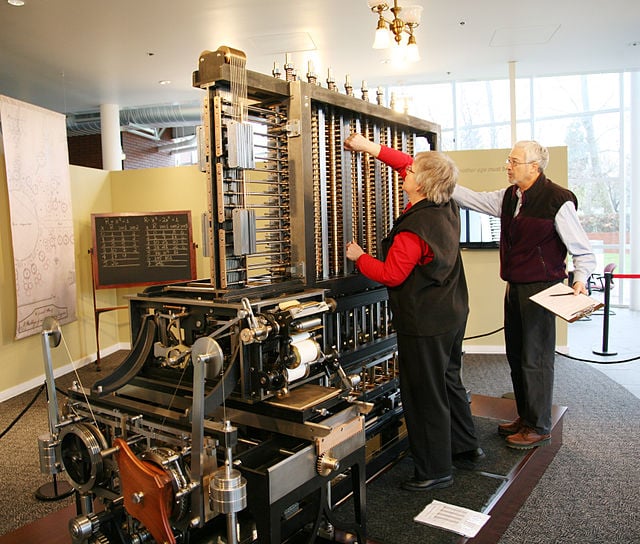
The human being of the 21st century lives in unprecedented times brimming with accelerating revolutions in knowledge, capabilities, and social upheavals. But make no mistake how old these are. This was obvious right at the start of that century, back on September 11, 2001. The means that al-Qaeda deployed were rather modern. Global networks of agile organizations consequently became extremely flexible and elusive.
But the key notion of a collective suicide for eternal glory in the paradise of a religious ideal from the 7th century stood out primarily on account of its deep roots in culture, history, and an ideologically distorted sense of spirituality. The current delusions full of QAnon conspiracy angst also harken back to medieval visions of ritual child murder and the social Darwinism, racial blood-shaming ideologies, and hatred of Jews from the 19th century. And geopolitically, that century seemed all ‘hip and happening’ in any event.
This holds just as true for the innovations and technological revolutions of our era. After all, the massive expansion of China’s high-speed rail network was the dream of old Deng Xiao Ping as to how his country might become as modern as the Europe and America of his youth circa 1910. So in 2022, we are now celebrating ‘200 years of the Computer.’ I am not sure if you have yet noticed if high-tech companies like ASML, Microsoft, Apple, and Huawei are gearing up for a grand anniversary celebration? I’m struck by the silence.
Difference engine
Nevertheless, it really is the case. In 1822, the English scholar Charles Babbage put forward his idea of a Difference Engine, which he had thought up the year before. An automaton, in other words, a machine that could overcome human limitations in the form of a computational tool that utilized the most advanced insights in mechanics and mathematics. More to the point, if you could think up something like that, then you could also build it. With that in mind, Babbage set to work. In European civilization, this in itself was a revolutionary shift and notion. Prior to this, after all, sublime speculation, artistic imagination, and spiritual philosophy had been at the center of things, until people like James Watt and Napoleon put a new phenomenon into the spotlight: ‘the doer, the maker, the modeler of unprecedented forces in concrete reality.
Also read: Step into the world of Leonardo da Vinci
Charles Babbage was another kind of Bonaparte, someone who would bring a bold idea to fruition, with physical force if need be. He set about building his ‘calculating device’ and covered all the core principles of the computer of later centuries. The thing that initially only existed as an idea, could actually become reality. Difference Engine No. 2 was designed between 1847 and 1849, although it was never built. It was a matter of waiting until the time was right for it to become reality. Until such a time that human industrial progress had so much finesse and miniaturization that such a device would be able to do everything faster, more often, and more flawlessly than any contraption hitherto.
When that moment came, the following Englishman made the next leap forward, Alan Turing. In the middle of the last century, he dared to transfer Babbage’s reasoning to an electronic reality in which space and time would practically no longer pose any constraints. He even had the unfortunate stroke of luck of being allowed to try that out without restrictions in a bid to break the codes of the tyrant of that Social Darwinism of that earlier century. It even made this young frontrunner and nerd a film hero of this century in “The Imitation Game” and he may now feature on the £50 bill as well.
Hope
Hence, what Babbage did in 1822 may give us cause to be a little more humble now and, at the same time, give us hope. He could not have imagined at the time how someday a Turing would create new worlds with his earlier endeavors. Much like we do in our time now. We figured out that you could move very fast in outer space and how, and thanks to Turing, very small objects can be controlled. This is how we managed to land a Babbage automaton of today on a comet and a moon of Saturn and measure infinity far beyond Pluto and our solar system.
To celebrate Babbage 200 years later is therefore to celebrate the unknowns that we have no way of knowing now that they will ever be known as unknowns. The “unknown unknowns. Again, as a historian, as an alpha, no need to tell me anything about that. It is what deeply concerns every artist and every historian. You do not know what you could not know and try to imagine what it could be. ”The past is a foreign country,” a British novelist once wrote. And the end is nowhere in sight, You saw that not only on that September 11th and all the things we failed to understand about that. The past is never over. Babbage is among us, Alan Turing is about to begin his next marathon race that is just around the corner.
About this column:
In a weekly column, written alternately by Eveline van Zeeland, Eugène Franken, Katleen Gabriels, Carina Weijma, Bernd Maier-Leppla, Willemijn Brouwer, PG Kroeger and Colinda de Beer, Innovation Origins tries to figure out what the future will look like. These columnists, occasionally joined by guest bloggers, are all working in their own way on solutions to the problems of our time. So that tomorrow is good.
Here are all the previous articles.








